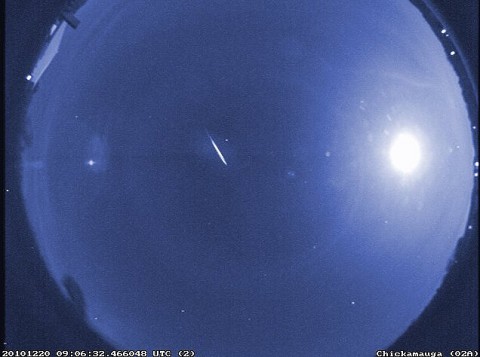Written by Janet Anderson
NASA Marshall Space Flight Center
 Huntsville, AL – The 2012 Quadrantids, a little-known meteor shower named after an extinct constellation, will present an excellent chance for hardy souls to start the year off with some late-night meteor watching.
Huntsville, AL – The 2012 Quadrantids, a little-known meteor shower named after an extinct constellation, will present an excellent chance for hardy souls to start the year off with some late-night meteor watching.
Peaking in the wee morning hours of January 4th, the Quadrantids have a maximum rate of about 100 per hour, varying between 60-200. The waxing gibbous moon will set around 3:00am local time, leaving about two hours of excellent meteor observing before dawn. It’s a good thing, too, because unlike the more famous Perseid and Geminid meteor showers, the Quadrantids only last a few hours — it’s the morning of January 4th, or nothing.

The Quadrantids derive their name from the constellation of Quadrans Muralis (mural quadrant), which was created by the French astronomer Jerome Lalande in 1795. Located between the constellations of Bootes and Draco, Quadrans represents an early astronomical instrument used to observe and plot stars. Even though the constellation is no longer recognized by astronomers, it was around long enough to give the meteor shower — first seen in 1825 — its name.
Given the location of the radiant — northern tip of Bootes the Herdsman — only northern hemisphere observers will be able to see Quadrantids.


